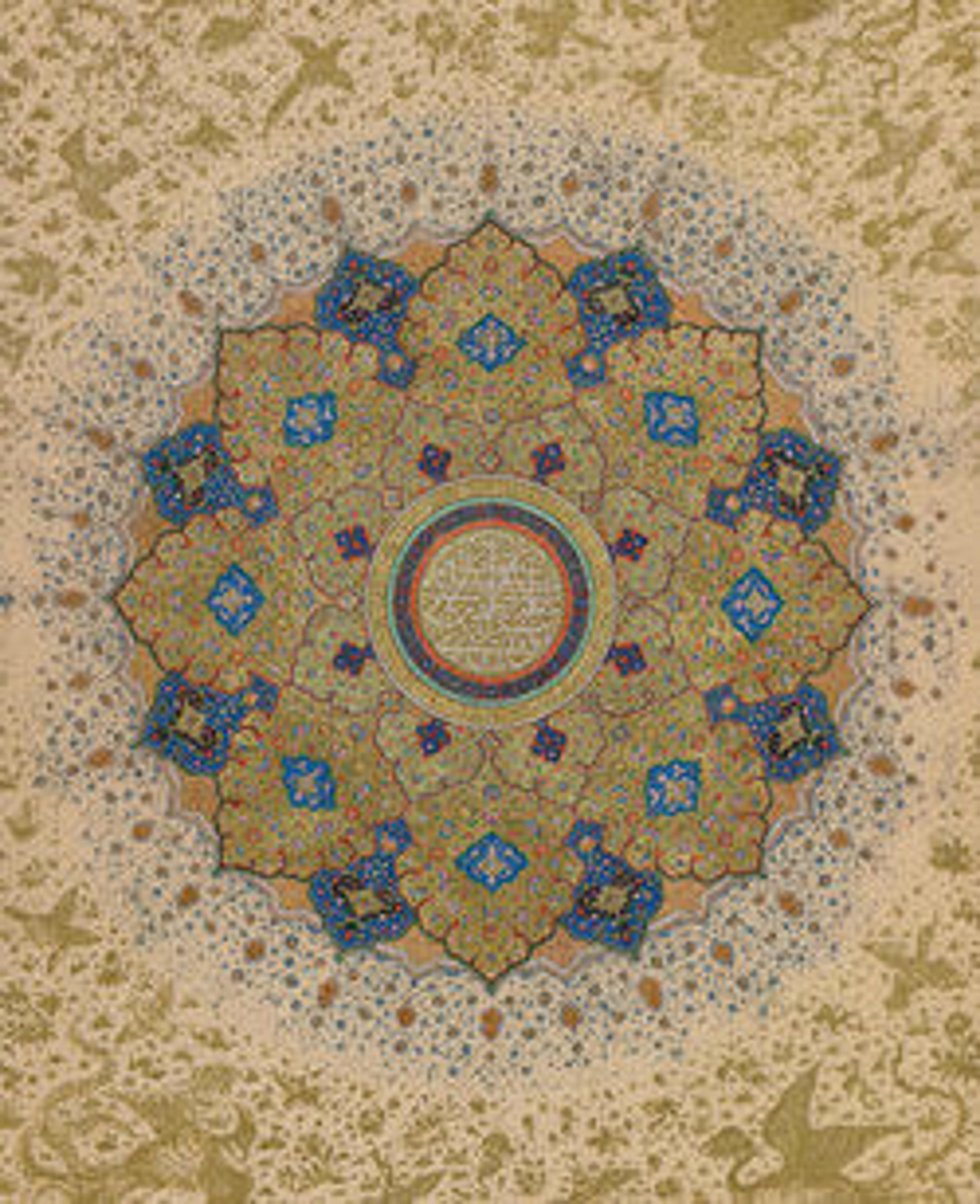Bowl with Musicians
With the emergence of the so‑called Kashan style, Iranian lusterware truly comes into its own. On this bowl, the richly patterned figures of two musicians at the center blend with their densely ornamented background. Four calligraphic bands, one of interlaced and foliated kufic and three in naskh script, contain benedictory phrases in Arabic, quatrains extracted from the works of four different Persian poets, and a poem attributed to the famous mystical poet 'Abd al- Majd Majdud Sana'i (d. 1130).
Artwork Details
- Title:Bowl with Musicians
- Date:mid-13th century
- Geography:Made in Iran, Kashan
- Medium:Stonepaste; luster-painted on opaque monochrome glaze
- Dimensions:H. 4 3/8 in. (11.1 cm)
Diam. 19 5/8 in. (49.8 cm) - Classification:Idiophone
- Credit Line:Fletcher Fund, 1932
- Object Number:32.52.2
- Curatorial Department: Islamic Art
More Artwork
Research Resources
The Met provides unparalleled resources for research and welcomes an international community of students and scholars. The Met's Open Access API is where creators and researchers can connect to the The Met collection. Open Access data and public domain images are available for unrestricted commercial and noncommercial use without permission or fee.
To request images under copyright and other restrictions, please use this Image Request form.
Feedback
We continue to research and examine historical and cultural context for objects in The Met collection. If you have comments or questions about this object record, please contact us using the form below. The Museum looks forward to receiving your comments.
